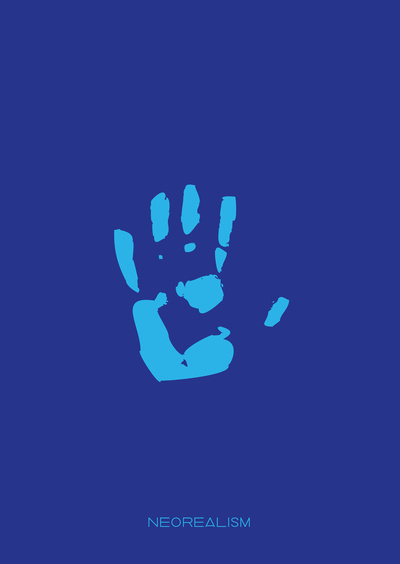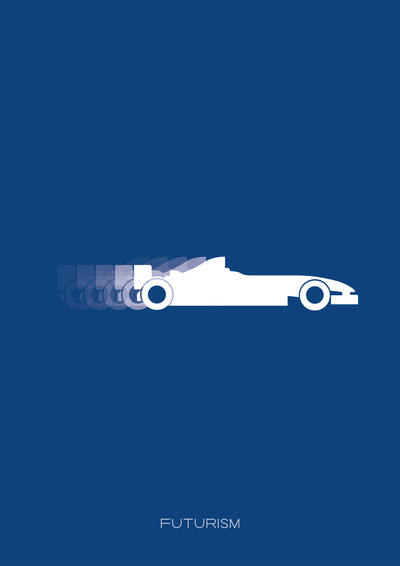expressionism

A modernist movement originating in Germany, Expressionism sought to convey meaning or emotional experience rather than physical reality. A typical trait of Expressionism is to present the world solely from a subjective perspective, distorting it radically for emotional effect and to evoke moods or ideas.
post-impressionism

Post-Impressionism was a term coined to describe an emerging art-form that was an extension to Impressionism. Artists continued to use vivid colors, thick application of paint, distinct brush strokes, and real-life subject matter, but were more inclined to emphasise geometric forms, distort true forms for expressive effect, and use unnatural, exaggerated, or arbitrary color.
dadaism
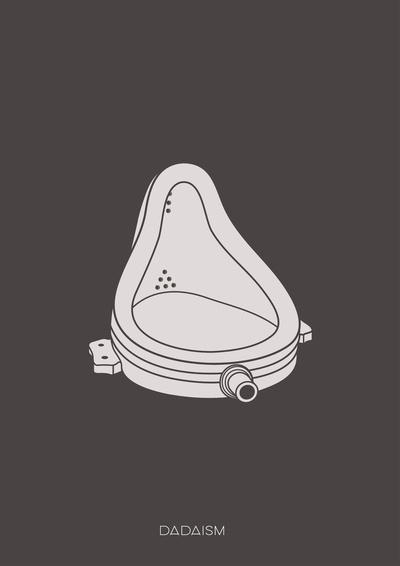
An art movement of the European avant-garde born out of negative reaction to the horrors of World War I. Dadaism involved visual arts, literature, poetry, theatre, and graphic design, and concentrated its anti-war politics through a rejection of the prevailing standards in art through ‘anti-art’ cultural works.
cubism
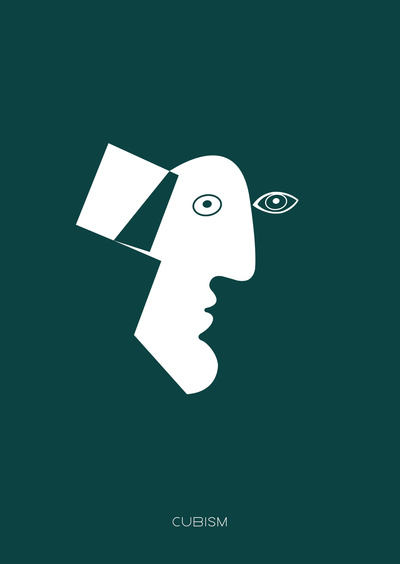
An art-form where subjects are analysed, broken up and reassembled in an abstract form. The object is simultaneously depicted from a multitude of viewpoints to represent the subject in a greater context.
surrealism

Known for its writing as well as its visual artworks, Surrealism aimed to resolve the previously contradictory conditions of dream and reality. Surrealist art features elements of surprise, juxtapositions and non-sequitur and artists often painted unnerving, illogical scenes.
pop art
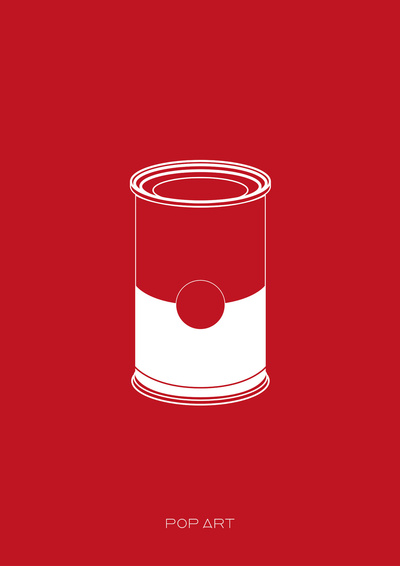
Emerging in Britain in the 1950s, pop art presented a challenge to traditions of fine art by including imagery from popular culture. Pop art emphasised banal or kitschy elements of any given culture by visually removing subjects from their known context, isolating them, or combining them with unrelated material.
op art

Op Art is a style of visual art that makes use of optical illusions. Paintings of this genre concern the interaction between illusion and picture plane, and the difference between seeing and understanding. The art-form often uses simple shapes and bold patterns and gives the viewer the impression of movement, flashing, vibration, swelling, or warping.
neorealism
Originating in the 1910s and continuing through to the 40s, Neorealism set out to explore the spirit of the age through the shapes and colors of daily life. Neorealism played a particularly strong role in the medium of film and was characterised by stories set amongst the poor and working class and frequently used non-professional actors.
kinetic art

Kinetic art can broadly be defined as any medium that contains movement perceivable by the viewer or depends on motion for its effect. It often refers to three-dimensional sculptures and figures where the parts are generally powered by wind, a motor, or the observer.
abstract art
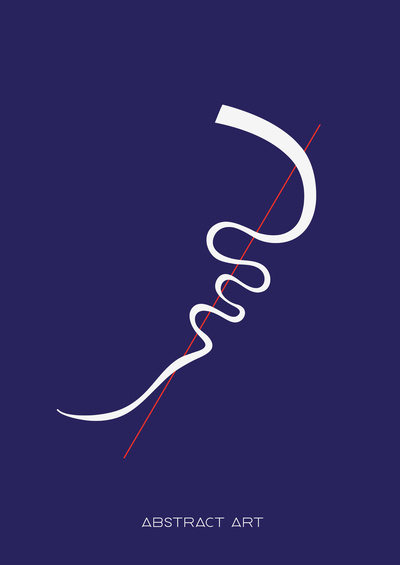
A broad genre that can encompass many other art-forms. Abstract art uses form, color, and line to create a composition independent from visual references in the real world. This departure from reality can be slight, partial, or complete and some of abstract art’s most controversial works bear no trace of any reference to anything recognizable.
fauvism
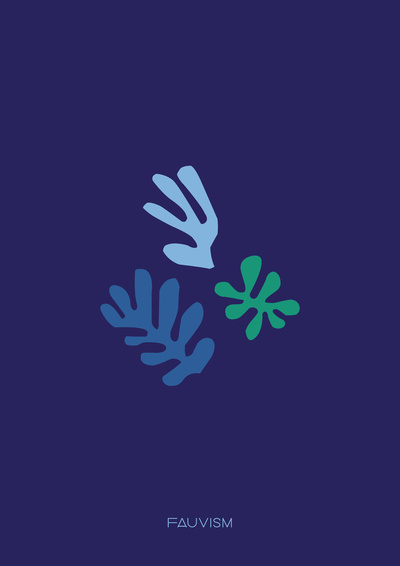
Characterized by its vibrant style and seemingly wild brush work, Fauvism emphasized painterly qualities and strong color over the representational or realistic values. Their subject matter had a high degree of simplification and abstraction.
de stijl
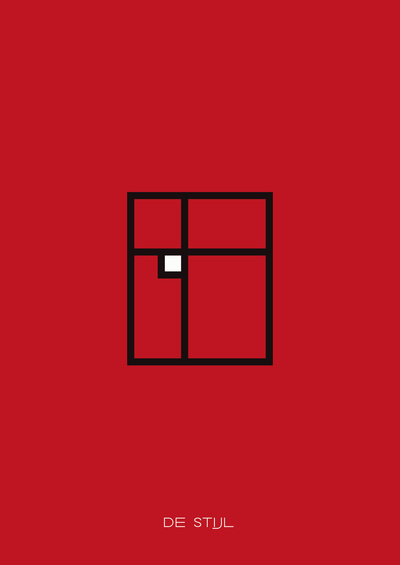
Dutch for the ‘The Style’, De Stijl was a movement advocating pure abstraction by reduction to the essentials of form and color. The art-form is characterised by the use of straight vertical and horizontal lines, and the use of only primary colors along with black and white.
futurism
Originating in Italy, Futurism glorified themes associated with contemporary concepts of the future, including speed, technology, youth, and violence. The subject matter of futurism often included cars, planes, industrial cities and all that represented the triumph of humanity over nature.
abstract expressionism
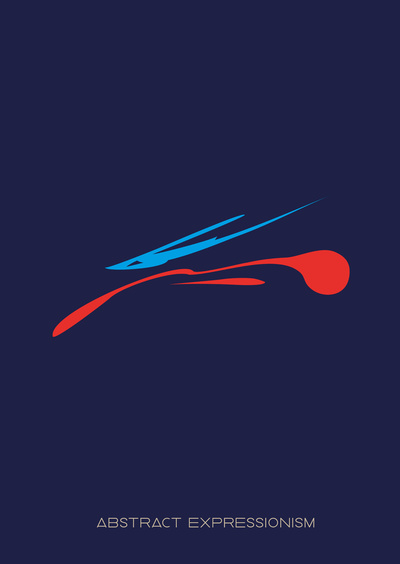
Originating in the US, Abstract Expressionism features work of spontaneous, automatic, or subconscious creation. It is often associated with ‘action painting’ where paint is spontaneously dribbled, splashed, or smeared onto the canvas, resulting in a work that emphasises the physical act of painting itself as an essential aspect of the finished work.
